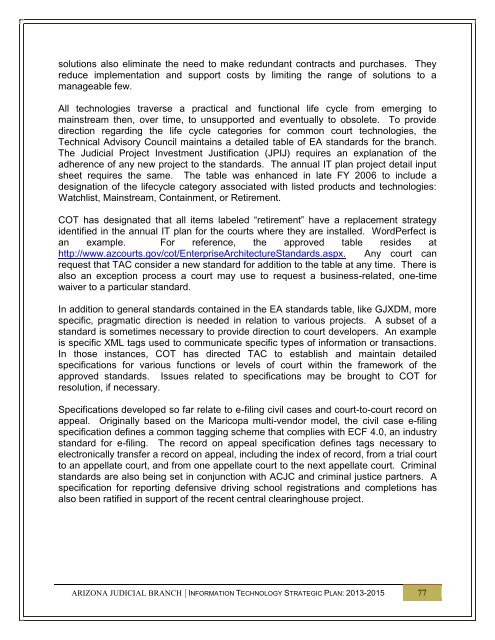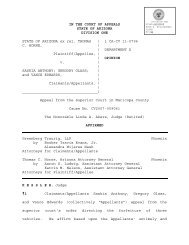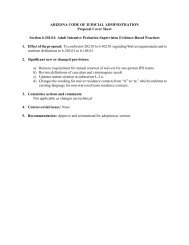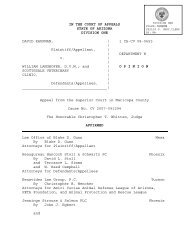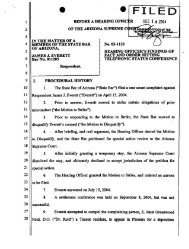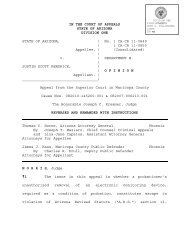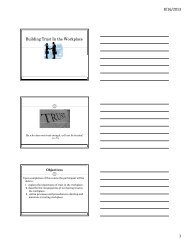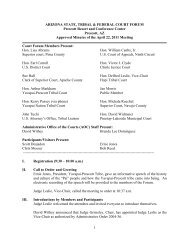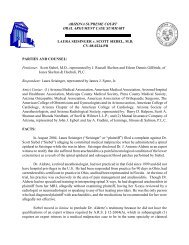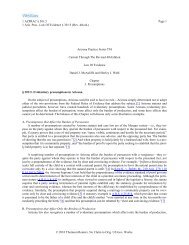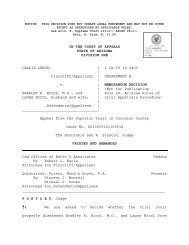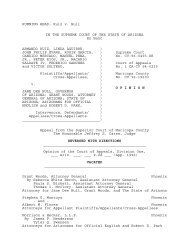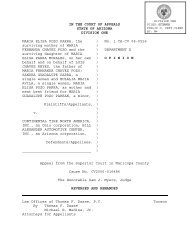Print Version - Arizona Judicial Department
Print Version - Arizona Judicial Department
Print Version - Arizona Judicial Department
You also want an ePaper? Increase the reach of your titles
YUMPU automatically turns print PDFs into web optimized ePapers that Google loves.
solutions also eliminate the need to make redundant contracts and purchases. They<br />
reduce implementation and support costs by limiting the range of solutions to a<br />
manageable few.<br />
All technologies traverse a practical and functional life cycle from emerging to<br />
mainstream then, over time, to unsupported and eventually to obsolete. To provide<br />
direction regarding the life cycle categories for common court technologies, the<br />
Technical Advisory Council maintains a detailed table of EA standards for the branch.<br />
The <strong>Judicial</strong> Project Investment Justification (JPIJ) requires an explanation of the<br />
adherence of any new project to the standards. The annual IT plan project detail input<br />
sheet requires the same. The table was enhanced in late FY 2006 to include a<br />
designation of the lifecycle category associated with listed products and technologies:<br />
Watchlist, Mainstream, Containment, or Retirement.<br />
COT has designated that all items labeled “retirement” have a replacement strategy<br />
identified in the annual IT plan for the courts where they are installed. WordPerfect is<br />
an example. For reference, the approved table resides at<br />
http://www.azcourts.gov/cot/EnterpriseArchitectureStandards.aspx. Any court can<br />
request that TAC consider a new standard for addition to the table at any time. There is<br />
also an exception process a court may use to request a business-related, one-time<br />
waiver to a particular standard.<br />
In addition to general standards contained in the EA standards table, like GJXDM, more<br />
specific, pragmatic direction is needed in relation to various projects. A subset of a<br />
standard is sometimes necessary to provide direction to court developers. An example<br />
is specific XML tags used to communicate specific types of information or transactions.<br />
In those instances, COT has directed TAC to establish and maintain detailed<br />
specifications for various functions or levels of court within the framework of the<br />
approved standards. Issues related to specifications may be brought to COT for<br />
resolution, if necessary.<br />
Specifications developed so far relate to e-filing civil cases and court-to-court record on<br />
appeal. Originally based on the Maricopa multi-vendor model, the civil case e-filing<br />
specification defines a common tagging scheme that complies with ECF 4.0, an industry<br />
standard for e-filing. The record on appeal specification defines tags necessary to<br />
electronically transfer a record on appeal, including the index of record, from a trial court<br />
to an appellate court, and from one appellate court to the next appellate court. Criminal<br />
standards are also being set in conjunction with ACJC and criminal justice partners. A<br />
specification for reporting defensive driving school registrations and completions has<br />
also been ratified in support of the recent central clearinghouse project.<br />
ARIZONA JUDICIAL BRANCH | INFORMATION TECHNOLOGY STRATEGIC PLAN: 2013-2015 77


